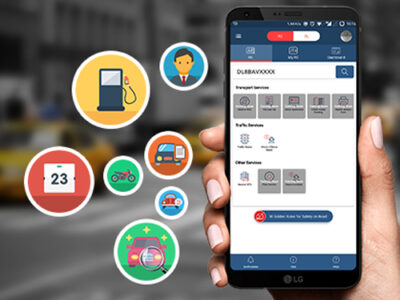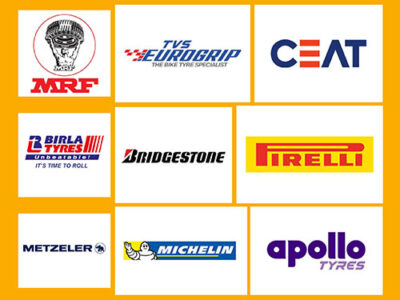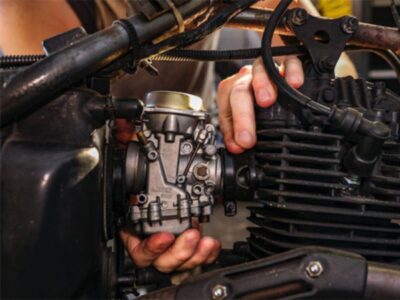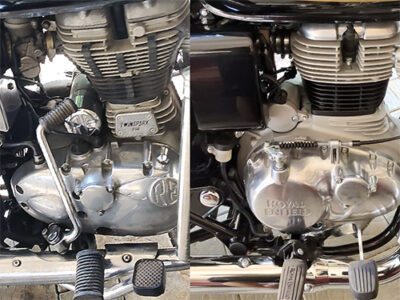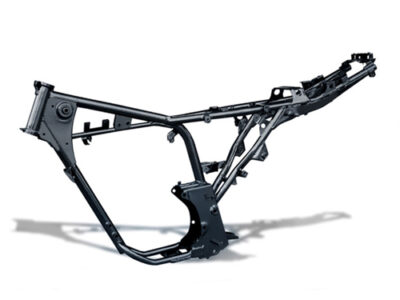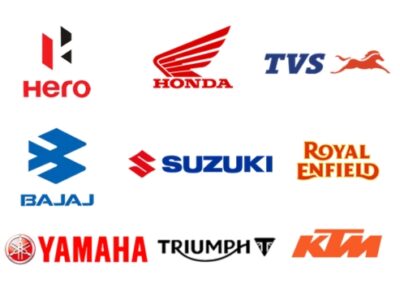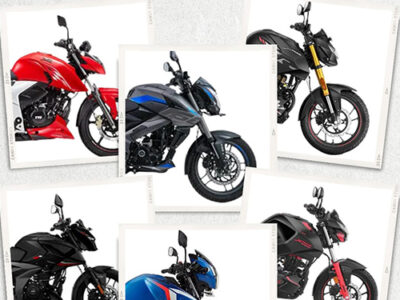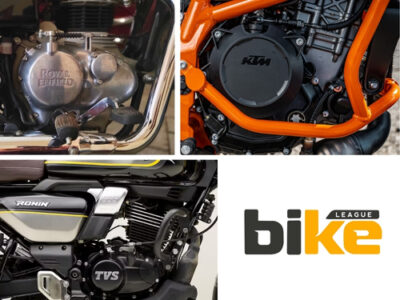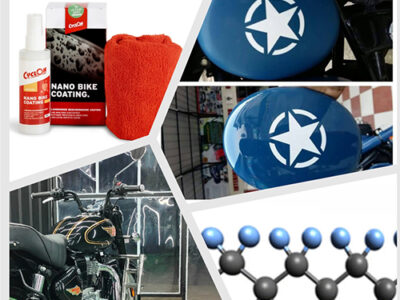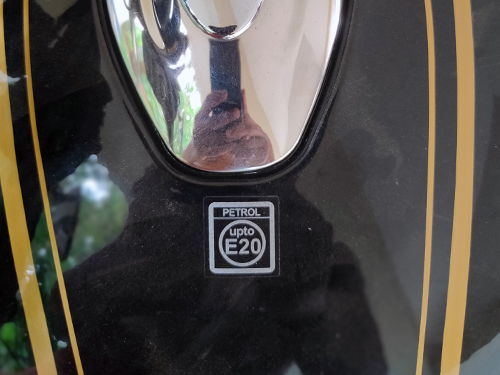
Long story short: Get the latest insights on ethanol petrol blending in India. Explore the advantages of E10 & E20 ethanol-blended petrol in India and learn how this fuel contributes to a greener future for motorcycles.
What is ethanol?
Ethanol, also known as ethyl alcohol, is one of the different forms of alcohol. It is a transparent, colourless liquid with a distinct scent and flavour. Ethanol comprises carbon, hydrogen, and oxygen atoms and has the chemical formula C2H5OH.
It is worth noting that pure ethanol is both non-toxic and biodegradable. In the event of a spill, it decomposes into harmless substances. Nevertheless, fuel ethanol is treated with denaturants, rendering it unfit for consumption.
What is ethanol blended petrol?
Imagine your regular petrol is like a glass of juice. Instead of pure juice, consider E10 fuel(available in India now) for motorcycles, which mixes 10% water with that juice. That water is ethanol, alcohol made from plants like sugarcane.
What is the Ethanol Blended Petrol (EBP) Programme?
The Ethanol Blended Petrol (EBP) Programme is a government initiative launched in January 2003 to promote ethanol-blended petrol as an alternative to conventional petrol. The program aims to enhance energy security, address climate change, and support agricultural sectors.
Types of ethanol blended petrol in India.
In India, there’s currently one primary type of ethanol-blended petrol readily available:
E10 Petrol (10% Ethanol): This blend contains 10% ethanol mixed with 90% regular gasoline. As of May 4, 2024, it’s the standard petrol available at most pumps nationwide.
E20 Petrol (20% Ethanol): The government plans to introduce E20 petrol nationwide by 2025. This blend will have a higher ethanol content (20%) than E10.
Making of ethanol
Ethanol is commonly made from renewable resources like corn, sugarcane, barley, wheat, and cellulosic materials such as agricultural residues and wood.
Pros of Ethanol Blended Petrol
- Reduced Emissions: Ethanol burns cleaner than gasoline; less carbon monoxide, hydrocarbons and soot than pure gasoline. This can improve air quality, particularly in urban areas.
- Renewable Resource: Corn and sugarcane are some of the plants from which ethanol is made, making it an alternative fuel source against fossil fuels.
- Energy Independence: Countries like India can reduce their dependence on imported oil and improve energy security by using ethanol.
- Improved Engine Performance: Ethanol has a higher octane rating than gasoline, which leads to better engine performance and reduced knocking.
- Rural Development: Ethanol production creates jobs in agricultural areas, boosting the rural economies of India.
It’s crucial to remember that while E20 has numerous benefits, there are also drawbacks.
Cons of Ethanol Blended Petrol
- Not Compatible with All Bikes: Higher ethanol blends (E85) may not suit all bikes and can damage older engines.
- Infrastructure expenses: Considerable investments in additional infrastructure, including storage tanks, pumps, and pipes, for the widespread adoption of E20.
- Corrosive nature: Ethanol, unlike gasoline, has unique chemical properties that can corrode various materials commonly found in fuel systems. Compatibility issues may lead to component deterioration or damage.
- Water absorption: Due to its hygroscopic nature, ethanol can absorb moisture from the air. If not correctly addressed by the manufacturer, this water absorption can cause phase separation and potentially lead to corrosion.
- Environmental impact of agriculture: The intensive farming practices involved in ethanol production can contribute to environmental issues like soil erosion, pesticide usage, and deforestation.
Implementing sustainable farming techniques is crucial in mitigating these effects.
Impact of ethanol blended petrol on the consumer
Fuel Efficiency: E20 fuel has a drop in fuel efficiency of 3-4% for motorcycles designed for E0 and calibrated for E10. However, with engine modifications (hardware and tuning), reducing mileage loss due to blending is possible.
Startability: In the E20 project, the results indicated that the test motorcycles passed stability and drivability tests in hot and cold conditions with E0 and E20 test fuel. In all the cases, no severe malfunction or stall was observed at any stage of vehicle operation.
Impact of ethanol blended petrol on the vehicle manufacturer
Engines and components must be tested and calibrated with E20 as fuel. Vendors need to be developed to procure additional components compatible with E20. No significant change in the assembly line is expected.
Impact of ethanol blended petrol on the component manufacturer
There will be no significant structural change in the components when migrating from E10 to E20. There will be changes in the materials of fuel pumps, piston rings, piston heads, seals, O-rings, etc.
Roadmap for ethanol blending in petrol in India in 2020-25
The roadmap proposes the following milestones:
- Increase ethanol production capacity nationwide from 700 to 1500 crore litres.
- Introduce E10 fuel gradually by April 2022.
- Implement E20 fuel rollout starting April 2023, with full availability by April 2025.
- Launch motorcycles compatible with E20 material and E10 engine by April 2023.
- Begin manufacturing motorcycles tuned for E20 fuel by April 2025. 6. Promote the use of water-efficient crops like maize for ethanol production.
- Support technology advancements for ethanol production from non-food sources.
FAQ related to ethanol petrol blending in India
1. Is the octane rating of ethanol actually higher than 100% petrol?
Yes. The octane rating of ethanol is actually higher than gasoline. In some cases, it might even lead to a slight improvement in engine performance.
2. How Does Ethanol Blending Affect Motorcycle Performance?
While ethanol-blended petrol is generally safe for motorcycles, it can slightly decrease fuel efficiency. Motorcycles not designed for higher ethanol blends may experience a drop in efficiency by 6-7% for four-wheelers and 3-4% for two-wheelers.
3. Is E10 petrol available everywhere in India?
Yes. India achieved the target of E10 blending well ahead of schedule in June 2022. This means E10 petrol is widely available across the country. Older motorcycles (generally pre-2001) might require adjustments to run smoothly on E10. It’s best to get in touch with a certified mechanic for guidance.
4. Does E10 petrol significantly reduce mileage?
While E10 has slightly lower energy density than pure gasoline, the decrease in mileage is typically in the range of 3-7%. This might not be noticeable for many drivers.
5. What is the difference between E10 & E20 fuel in motorcycles?
The critical difference between E10 and E20 petrol lies in the percentage of ethanol blended with regular petrol. E10 petrol contains 10% ethanol and 90% petrol. It’s the standard ethanol blend currently available across most of India.In motorcycles,E20 fuel contains a higher ethanol concentration, at 20% ethanol and 80% petrol .The Indian government plans to introduce E20 by 2025.
6. Is E10 petrol available in India?
Yes, E10 petrol, blended with 10% ethanol, is available in India. In fact, India achieved the target of E10 blending well ahead of schedule, reaching it in June 2022.
This means most of the petrol you pump in your bike or car in India is likely E10. The government is aiming for even higher ethanol blends in the future. They have plans to make E20 petrol (20% ethanol) available nationwide by 2025.
7. What will the cost of E20-compatible motorcycles be in India?
The cost of E20-compatible motorcycles is expected to be higher in the range of Rs 1000 to Rs 2000 for two-wheelers, over and above the price of ordinary motorcycles that run on 100% gasoline.
8. What are the benefits of Ethanol blending?
Ethanol blending offers several benefits, including reducing greenhouse gas emissions, decreasing reliance on imported crude oil, and conserving foreign exchange reserves. It also supports the rural economy by promoting the cultivation of crops like maize and sugarcane.
9. Are all motorcycles compatible with E20 Petrol?
Not all motorcycles are compatible with E20 petrol. Older motorcycles may face issues such as engine components being corroded. Manufacturers use ethanol-resistant materials to adapt newer motorcycles to be compatible with E20.
10. Are All motorcycles Compatible with E10 fuel?
It is commonly used in internal combustion engines of most modern automobiles without requiring engine modifications.
Here are some related articles from our team
- Motorcycle fuel – Types, things to know & take care in India
- Electric motorcycles & scooters in India: Examining the pros & cons
- Motorcycle fuel tank – How to maintain properly
- Motorcycle advanced materials – All you need to know
- Okaya Scooters
Conclusion
Ethanol petrol blending in India is definitely the future. Everyone in the motorcycle industry is making necessary changes to the system by blending ethanol and petrol. Hence, an idea about this new biofuel is the need of the hour.
If you have any other doubts or queries about monsoon riding tips, email us at bikeleague2017@gmail.com. We are always eager to help and assist you. Also, here are several social media platforms of Bikeleague India to raise your suspicions.


